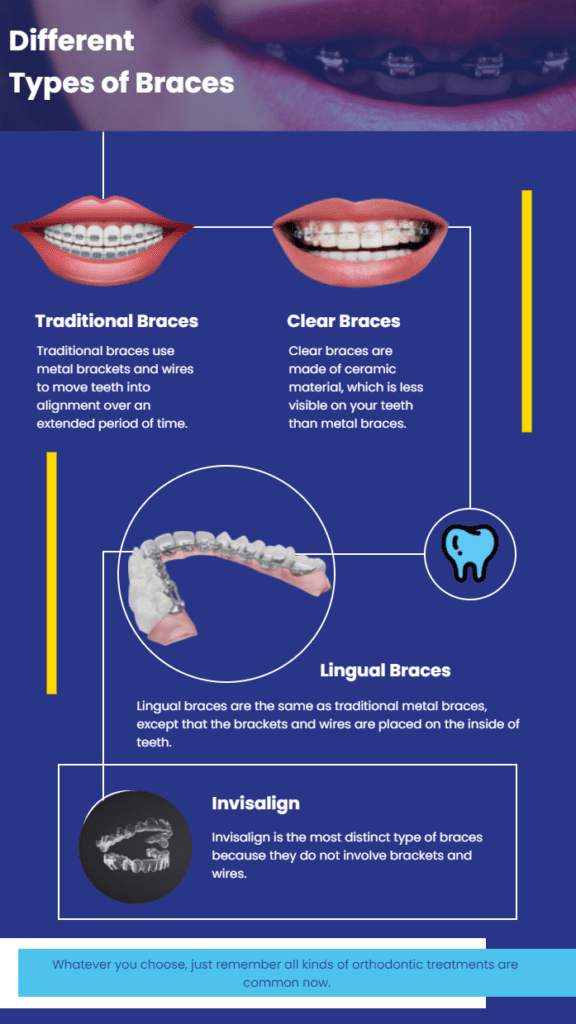Comprehensive Overview to Orthodontics Procedures for Correcting Oral Misalignments
Comprehending the complexities of each treatment, including their systems, advantages, and possible drawbacks, is important in making notified decisions about one's orthodontic therapy. As we browse with the detailed guide to orthodontic procedures for dealing with oral imbalances, the elaborate information of each technique will unravel, dropping light on the path towards a practical and harmonious oral positioning.
Orthodontic Procedures Summary

Along with standard braces and clear aligners, orthodontists might likewise advise various other treatments like headwear, palatal expanders, or retainers to resolve certain placement issues (cumming orthodontics). These treatments are tailored to every person's unique needs and may include a mix of treatments to achieve the preferred outcomes. Normal adjustments and tracking are crucial parts of orthodontic therapy to guarantee development is on track and to make any essential modifications along the road. By undertaking orthodontic procedures, individuals can not just accomplish a straighter smile however likewise boost their general dental health and wellness and feature.
Standard Dental Braces: How They Function
When taking into consideration orthodontic treatments for dental misalignments, traditional dental braces stand apart as a time-tested method for remedying teeth positioning. Traditional dental braces consist of brackets, cords, and bands that work with each other to use continual pressure on the teeth, gradually moving them into the desired placement. The braces are connected to the teeth making use of a special adhesive, and the cables are threaded with the braces. By adjusting the stress of the wires, orthodontists can manage the direction and pressure put on each tooth, guiding them into proper placement gradually.
As stress is applied to the teeth via the dental braces, the bone bordering the teeth is improved to support the new tooth settings. Clients will require normal changes at the orthodontist's office to make sure the dental braces proceed to use the correct stress for reliable teeth motion.
Undetectable Aligners: Benefits And Drawbacks
These clear, customized trays are practically invisible when used, making them an appealing option for individuals looking for a much more cosmetically pleasing orthodontic treatment. People can get rid of the aligners prior to eating or cleaning their teeth, minimizing the threat of food getting stuck in the device and streamlining the cleansing procedure.

Surgical Orthodontic Options
Surgical interventions in orthodontics present feasible options for addressing complex dental misalignments that might not be properly fixed through standard orthodontic treatments. While conventional dental braces and unnoticeable aligners can fix several orthodontic issues, certain cases call for medical treatment to accomplish optimal outcomes. Surgical orthodontic options are normally recommended for severe malocclusions, substantial jaw discrepancies, and cases where the underlying bone framework needs alteration to accomplish appropriate positioning.
One usual medical orthodontic procedure is orthognathic surgery, which involves repositioning the jaws to fix practical issues such as problem eating or talking. This surgical procedure is frequently performed in partnership with an orthodontist who helps align the teeth before and after the procedure. Surgical orthodontics might additionally include treatments to expose impacted teeth, get rid of excess periodontal tissue, or improve the jawbone to create a much more harmonious facial profile.
Before thinking about surgical orthodontic options, individuals undertake a comprehensive examination to figure out the need and prospective benefits of such interventions. cumming orthodontics. While surgical procedure might appear complicated, it can substantially improve both the feature and appearances of the smile in instances where conventional orthodontic treatments fall short
Retainers and Post-Treatment Treatment

Failing to abide with post-treatment care guidelines can result in regression, where the teeth progressively move back in the direction of their original placements. Regular retainer wear, great oral health, and normal official statement oral examinations are vital for maintaining the results achieved via orthodontic surgical treatment and making sure the lasting stability of the remedied dental placement.
Conclusion
In final thought, orthodontic treatments use various choices for fixing oral misalignments. Surgical orthodontic options are offered for much more severe misalignments. In general, orthodontic procedures can effectively boost dental health and wellness and aesthetic appearance.
As we navigate via the detailed guide to orthodontic procedures for remedying oral misalignments, the intricate details of each method will unravel, shedding light on the path toward a harmonious and practical oral positioning. - cumming invisalign
One of the most usual orthodontic therapies is the usage of braces, which are composed of steel address brackets and wires that use gentle pressure to gradually move teeth right into the desired setting.When taking into consideration orthodontic therapies for dental imbalances, standard braces stand out as a time-tested approach for fixing teeth positioning. Furthermore, unseen aligners may not be ideal for complicated orthodontic concerns that require more considerable teeth movement, as they are usually recommended for moderate to modest instances. Retainers are custom-made orthodontic gadgets made to hold teeth in their dealt with settings after the conclusion of orthodontic therapy.